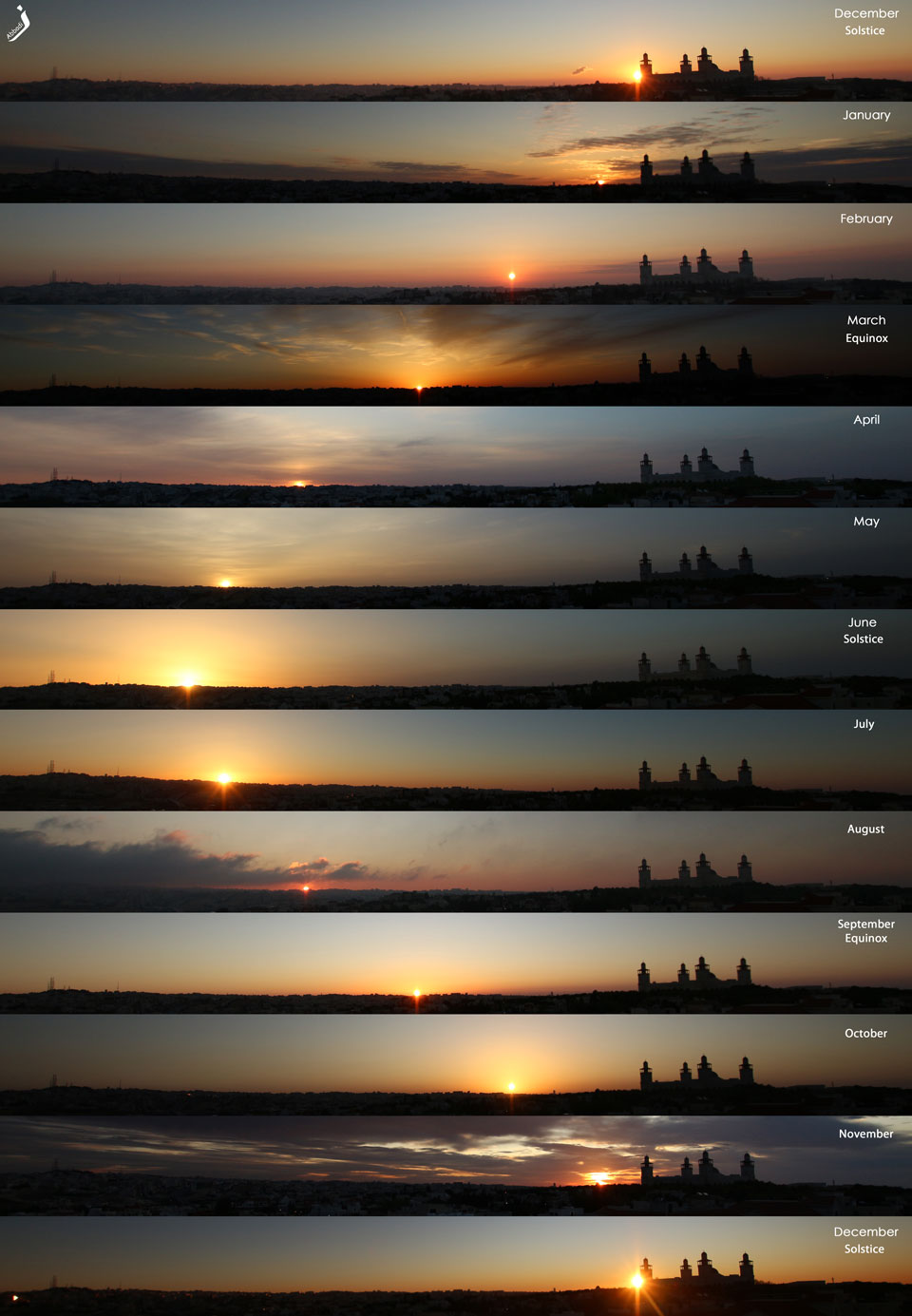2020年12月21日
Solstice: Sunrises Around the Year
Image Credit & Copyright: Zaid M. Al-Abbadi
Explanation: Does the Sun always rise in the same direction? No. As the months change, the direction toward the rising Sun changes, too. The featured image shows the direction of sunrise every month during 2019 as seen from near the city of Amman, Jordan. The camera in the image is always facing due east, with north toward the left and south toward the right. Although the Sun always rises in the east in general, it rises furthest to the south of east on the December solstice, and furthest north of east on the June solstice. Today is the December solstice, the day of least sunlight in the Northern Hemisphere and of most sunlight in the Southern Hemisphere. In many countries, the December Solstice is considered an official change in season: for example the first day of winter in the North. Solar heating and stored energy in the Earth’s surface and atmosphere are near their lowest during winter, making the winter months usually the coldest of the year. On the brighter side, in the north, daylight hours will now increase every day from until June.
Sunset: The Great Conjunction of Jupiter & Saturn
Tomorrow’s picture: three jets
冬至:献上一年的日出
影像提供与版权: Zaid M. Al-Abbadi
说明: 太阳都在相同方位升起吗?不是。每一天日出的方位,其实都稍有不同。这幅在2019年摄于约旦.安曼市的主题影像,呈现从该地看出去每个月日出方位的变化。相机的指向是正东,所以左侧是北方,右侧为南方。虽然日出的大致方位是东方,不过冬至那天的日出在东南,而夏至那天的日出最偏北。今天适逢冬至,所以北半球今天的日照时间最短,而南半球的日照最长。有许多国家认为冬至标示季节变化的起点,是北半球冬季的第一天。在冬季,阳光及储存在地面的热能,是一年之中最少的时候,所以气温通常也是一年之中最低。不过,如果往看光明面,从今天起到夏至为止的每一天,北半球的日照时间会持续增加。
日落:木星与土星的大近合
明日的图片: three jets







